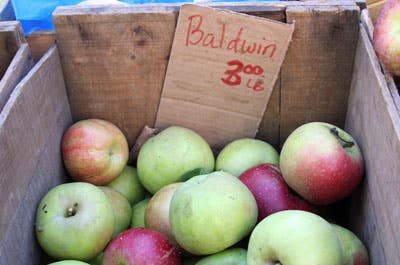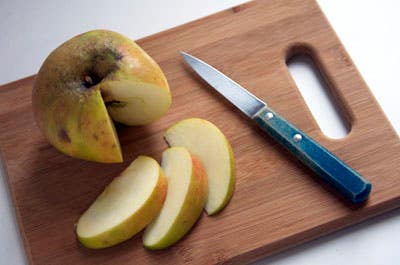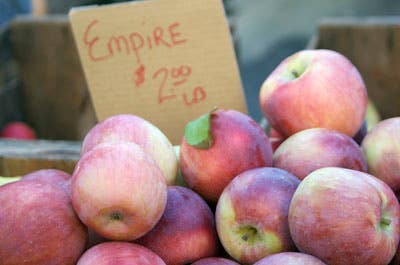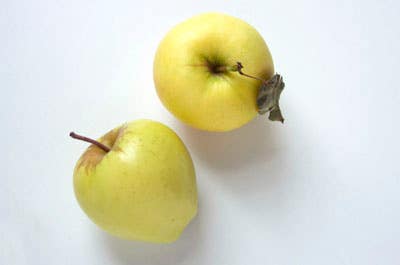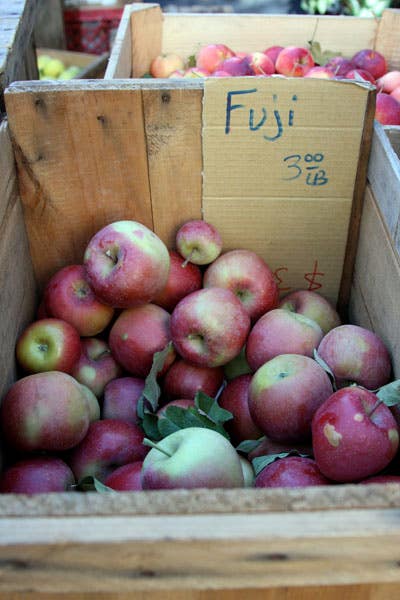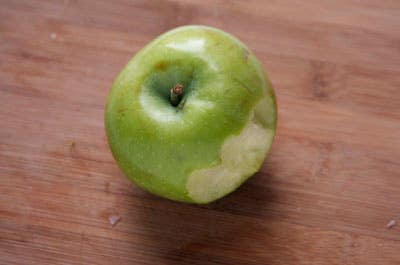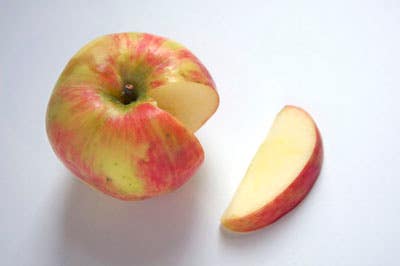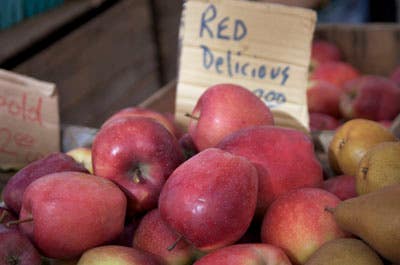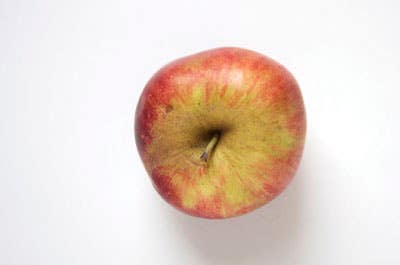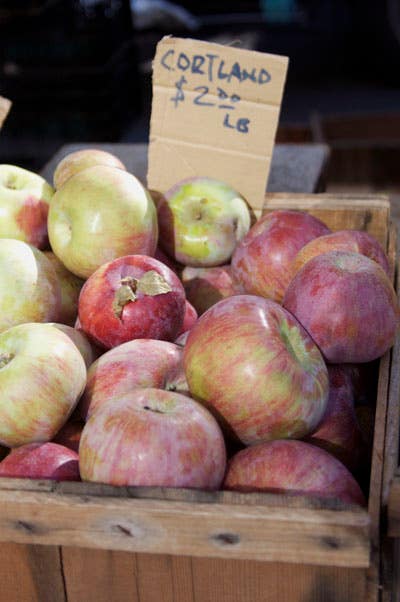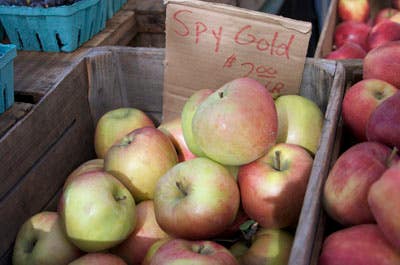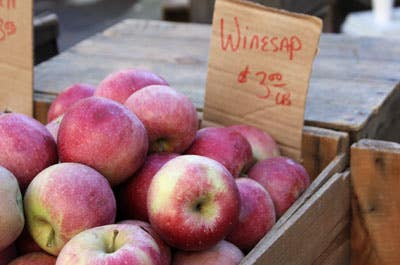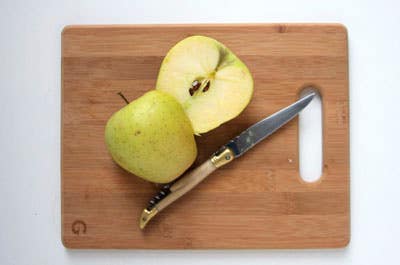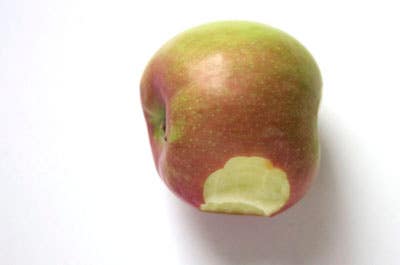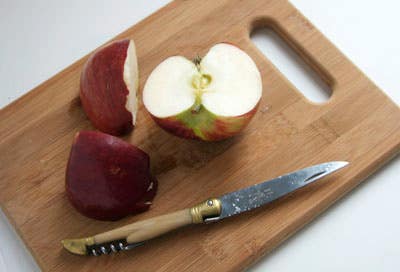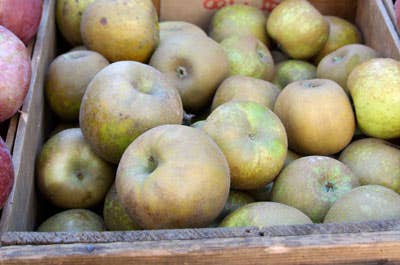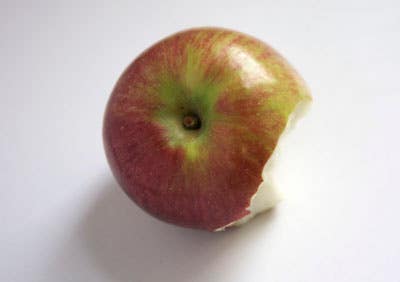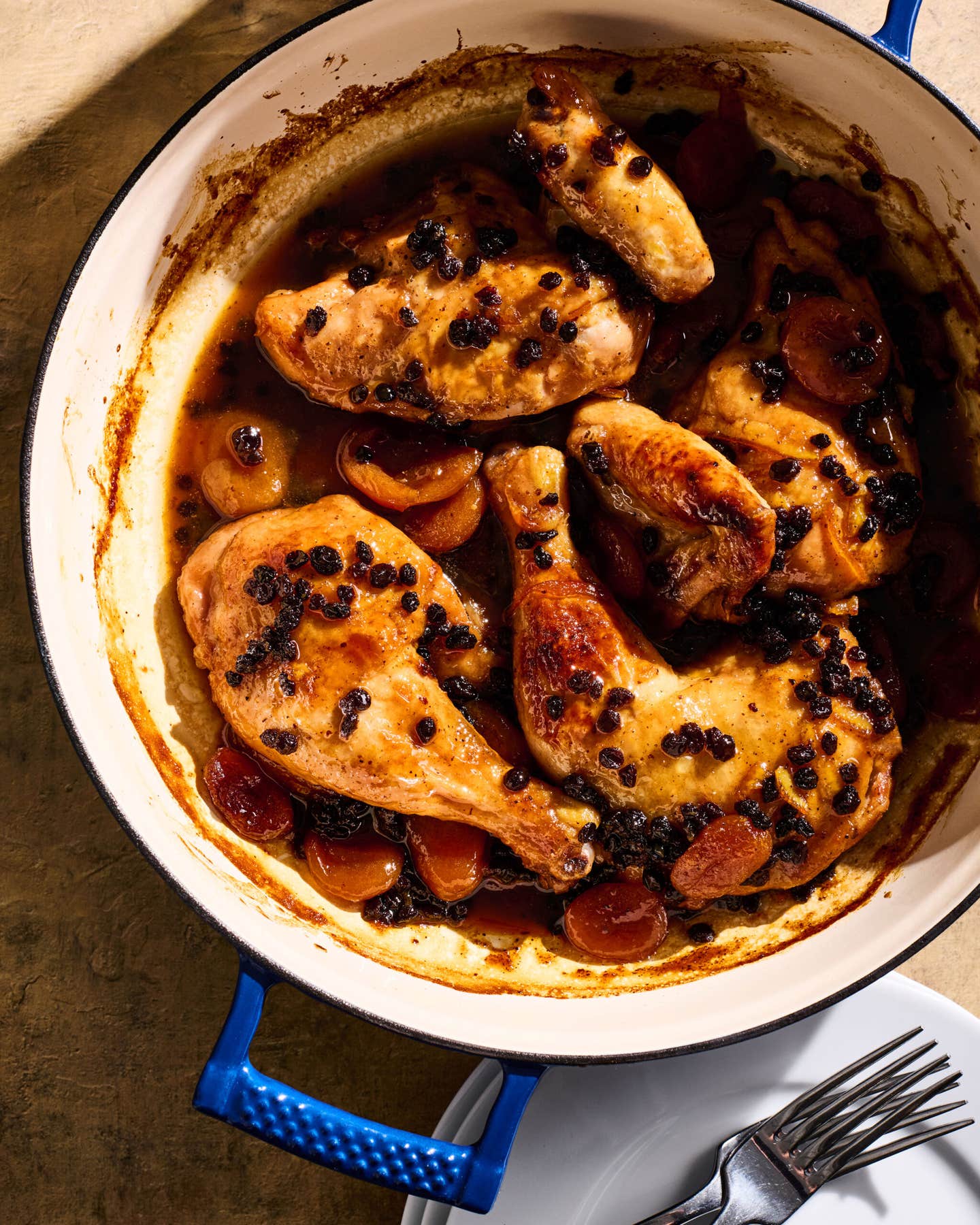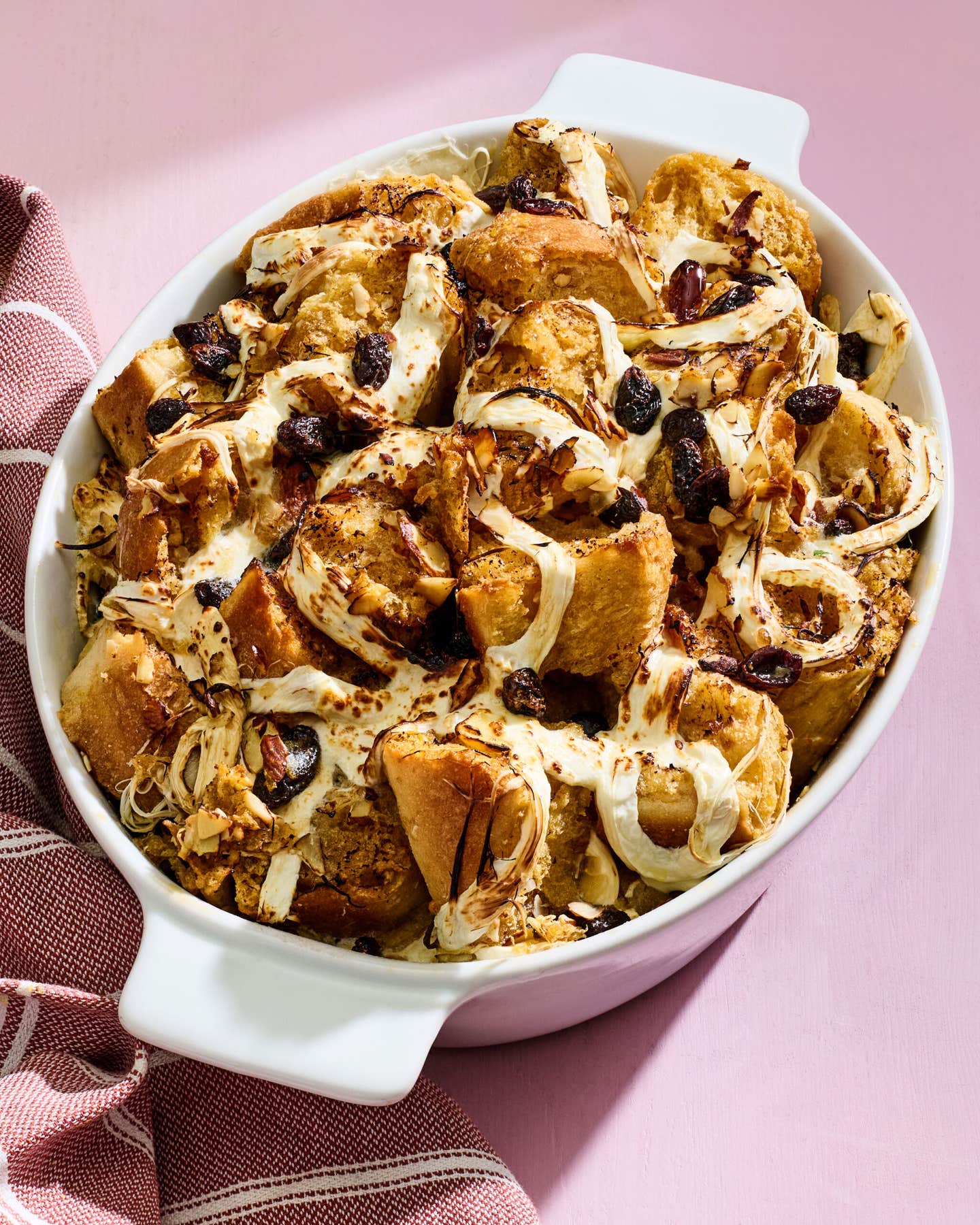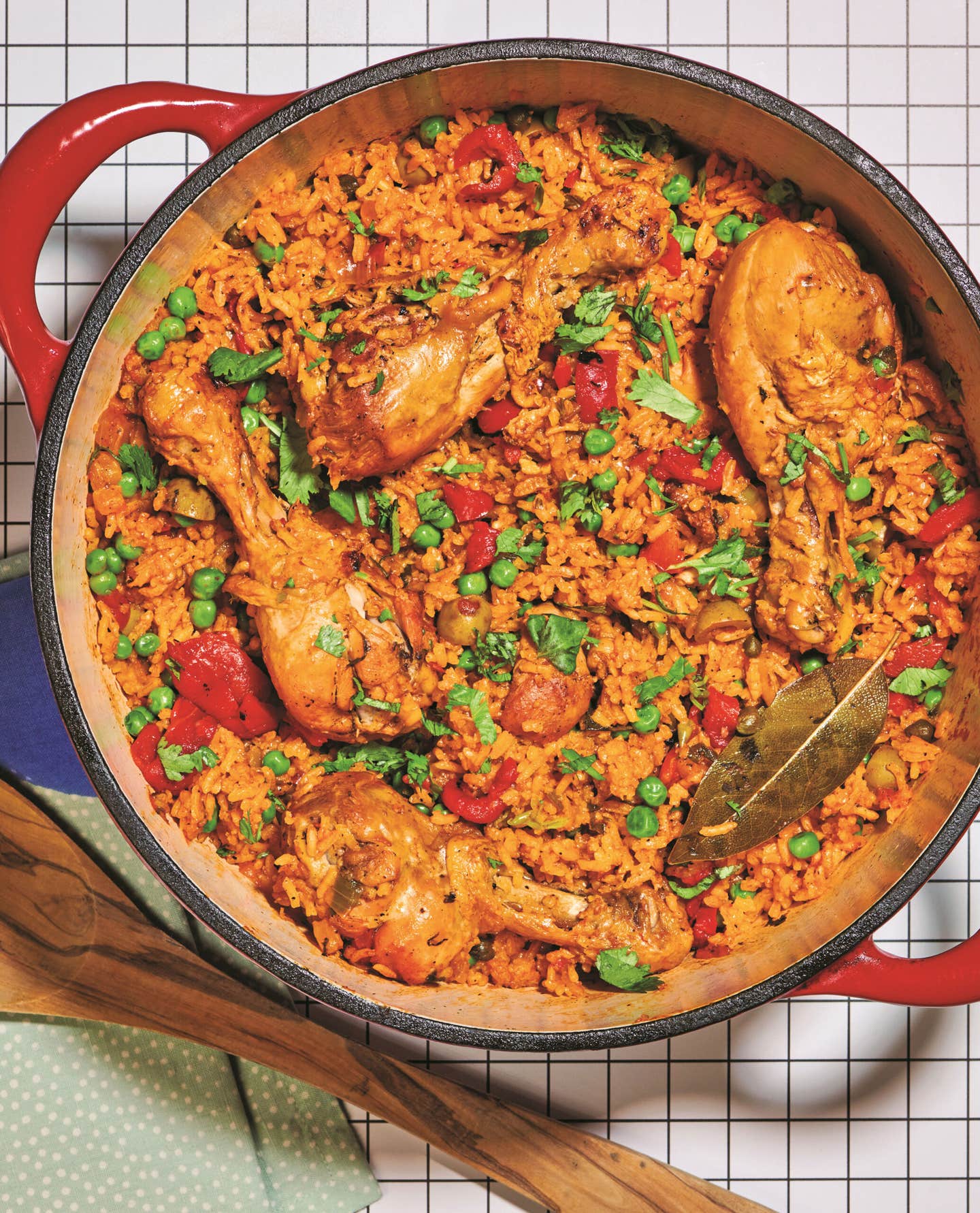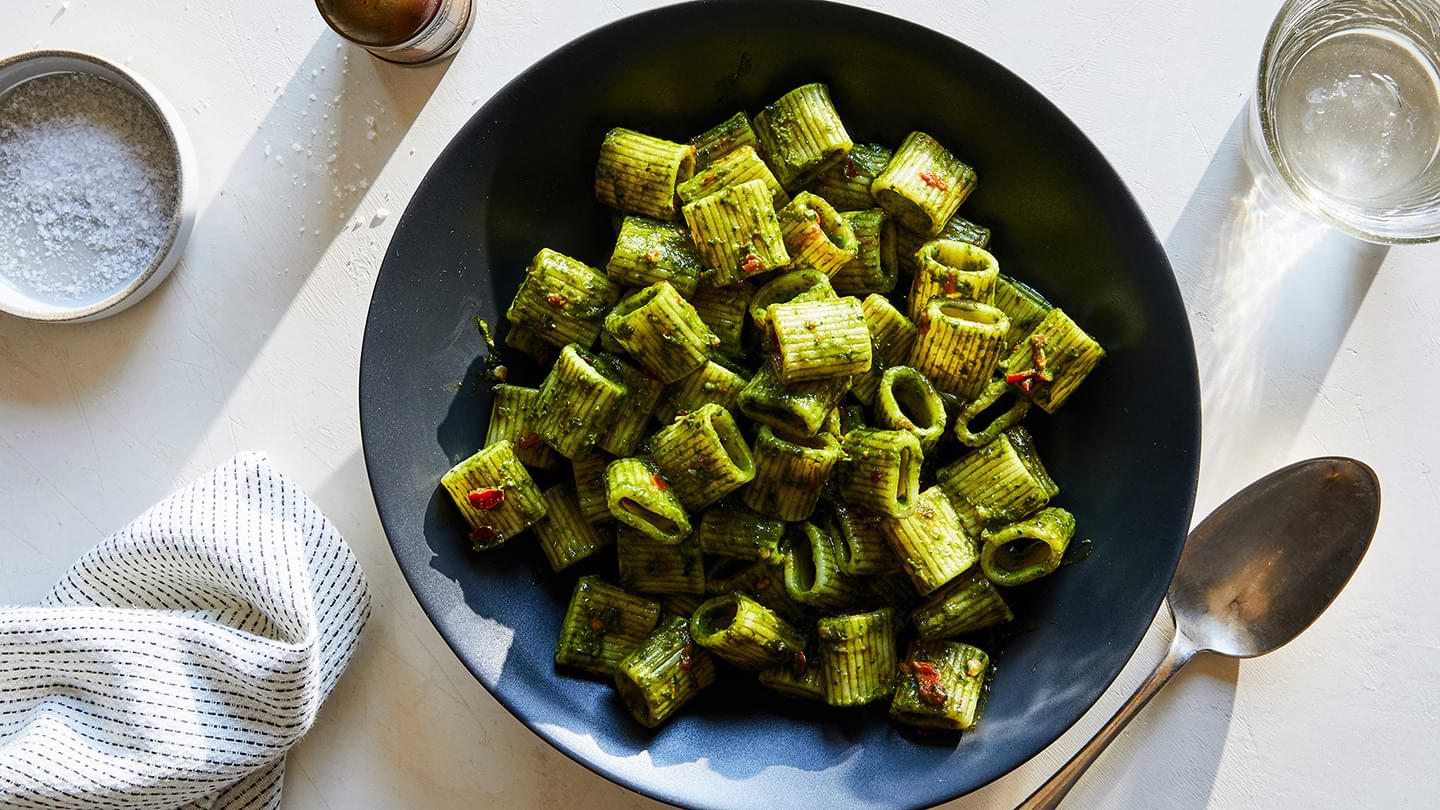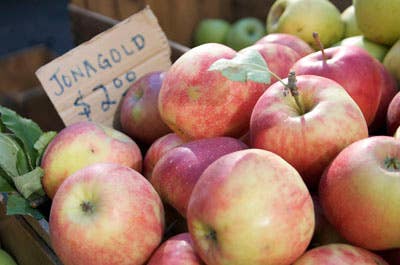
Tasting Notes: 18 Apple Varieties
Apples come in a staggering number of varieties—some have a sturdy texture and tartness that's perfect for baking; others are best eaten out of hand, or sliced and served as a crisp accompaniment to cheese. Here are 18 types of our favorite fall fruit.
Don't miss: Our Best Apple Recipes to go Beyond Pie
Baldwin
The Baldwin is a firm, sweet, subacid variety retaining a sharp, cidery aftertaste that pairs well with cheese and makes it suitable for use in baking in pies or crisps. When baking, it’s best to use a combination of sweet and tart varieties to in order to balance their flavors.
Newtown Pippin
The Newtown Pippin, one of America’s oldest apples, is a versatile culinary variety. Its initial sweetness and tart bite make it perfect in pies; cooking enriches the flavor. It’s also lovely eaten out of hand, made into sauces (it becomes a textured, full flavored purée), or pressed for juice and cider.
Empire
Empires have a thick skin and a bright white, slightly vinous and fruity flesh. They stand up well to baking and are decent eaten out of hand, though they tend towards blandness and are best when bolstered by spices and other ingredients.
Ginger Gold
Related to the soft-fleshed Golden Delicious, Ginger Golds hold their own with a sharper taste and crisp, breaking flesh. They retain a nice sweetness, especially for an early-ripening variety (ready for harvest in mid-to-late August). Whereas the Golden Delicious is perhaps better in pies or compotes, Ginger Golds are better eaten fresh.
Fuji
The Fuji, pretty to look at with its pink-speckled flush on a yellow-green background, has a crisp, juicy, sweet flesh that pairs well due to a fairly simple flavor profile. The Fuji is good with cheese, good with wine, and great on its own; don’t waste this gem in a pie.
Greening Sour
As the name implies this is not an eating apple: It’s far too sour, with bracing acidity reminiscent of unripe grapes. It is, however, an excellent addition to a pie mix in combination with sweeter fleshed varieties.
Honeycrisp
The name says it all: Honeycrisps are juicy and explosively sweet with negligible acidity and little complexity. They have a light, crunchy flesh. Honeycrisps aren’t recommended for cooking, but for those that like their apples candy-sweet, they’re excellent eaten fresh.
Red Delicious
Starchy and sweet with a very mild flavor, this apple is commonly eaten raw, though it does well combined with tarter and more flavorful varieties in pies and sauces.
Jonathan
The Jonathan is a classic variety, grown in America for over 200 years. It has a tender, yellow flesh that breaks off nicely and a full flavor, making it equally suited to snacking raw or cooking.
Cortland
With pure white, surprisingly firm flesh that retains its shape and texture even at high heats, Cortlands are ideal for baking whole. They have a slightly cidery taste and flesh that takes longer than most to brown when cut, making them good for raw uses like fruit cups and salads.
Spigold
Spigolds are a vinous variety, harboring some of the same complexities as wine. They have a spiced flavor and honeyed richness with a fine-grained flesh that make them good for both eating and cooking.
Winesap
As its name suggests, the Winesap has a juicy, fermented flavor, making it an ideal companion to cheese and wine. The flesh is tart and crunchy, an excellent addition to a fall salad, and the flesh is thick with hints of savory umami flavor.
Golden Delicious
Exceptionally sweet and rich with good balancing tartness and a crisp, fine-grained flesh, these apples are great in fresh salsas or chutneys, or sliced thinly and tossed into salads. They also make great dried apple slices: simply slice and dry in a dehydrator or a low-temperature oven.
McIntosh
The McIntosh, one of America’s most famous varieties, has a crisp white flesh, chewy skin, and sweet flavor with good balancing acidity. Its flavor peaks right when picked, so it is sometimes bland by the time it reaches consumers’ homes. It’s at its best broken down in applesauce or apple butter; its extra-juicy flesh is too mushy when baked.
Red Cortland
Like the Cortland, the Red Cortland is an excellent baking apple, holding its shape well in the oven. It’s tarter than the standard Cortland, however, with a delicate white wine taste.
Golden Russet
The Golden Russet is a versatile variety, good for eating raw, cooking, and juicing. Its sweet, starchy white flesh is perfect for baking in pies or eating fresh with cheese.
Macoun
Sweet and fruity, this is a great eating apple. The crisp, pure white flesh has spice, strawberry, and floral notes with a wine-like acidity and complexity.
Keep Reading
Continue to Next Story
